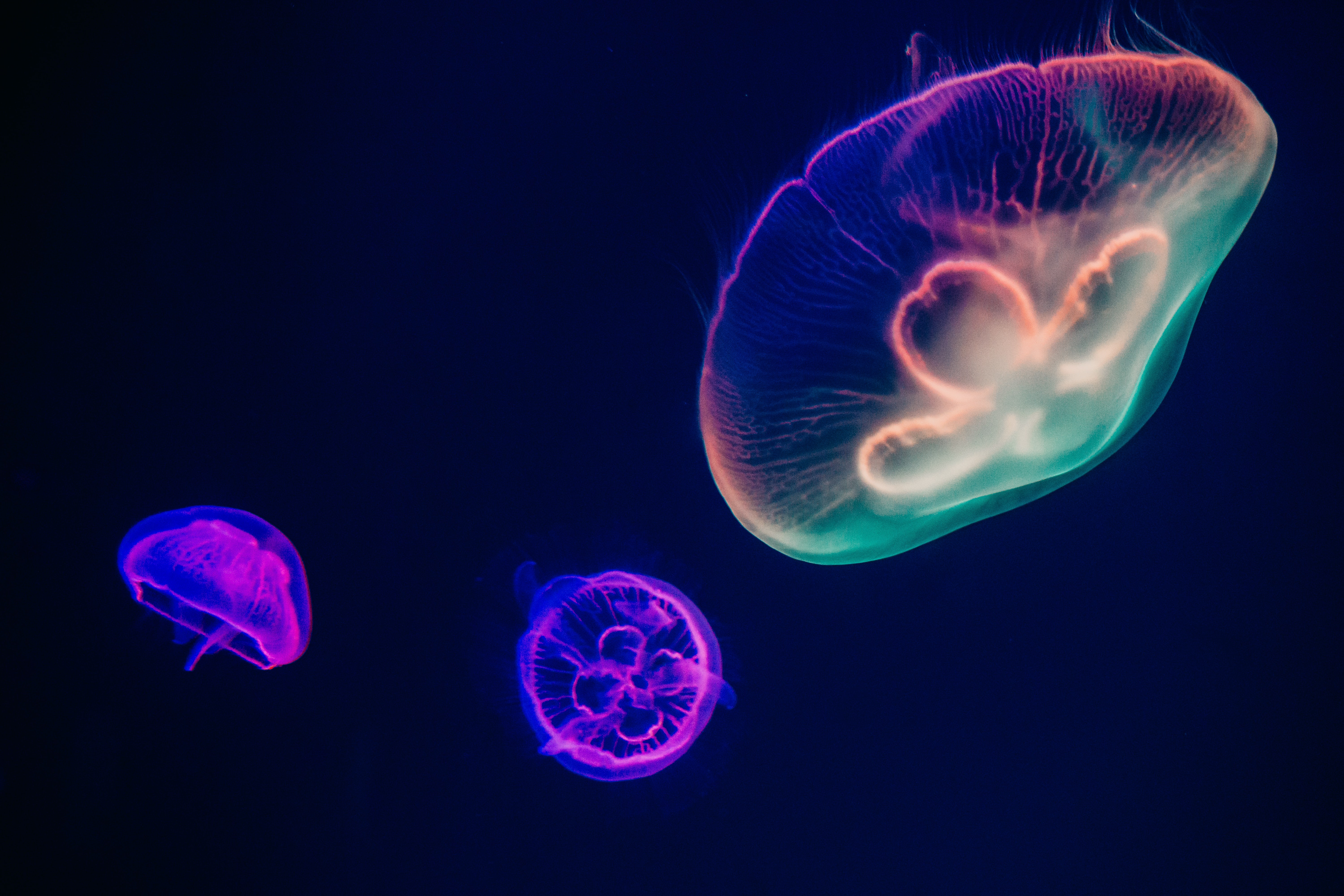Aerifor
Yet, what forms of life must still exist beyond our vast understanding?
Aerifor are a strange species known only to exist in the otherwise uninhabitable Enaski Wetlands. Due to the deadly weather and the numerous natural threats that plague the region, very little is known about this lifeform. Most who are aware of it speculate it falls somewhere between plant and mundane animal, but there are others who theorize that it may contain self-awareness and intelligence on par with benevolent races.
Basic Information
Anatomy
The physical structure of an aerifor is primarily that of condensed plasma. Generally orbital in appearance (though exceptions to this are not rare), its internal system is comprised of a swirling vortex of dust particles that circulate around a nucleus-like formation of matter. These act as a means of capturing and processing various nutrients and minerals in its surrounding environment. These structures sometimes emit photons as they interact, resulting in strong, glowing halos that encompass their bodies. Other minerals in the surrounding environment may be taken into the body and occasionally used to form a temporary shell or exoskeleton, or to replenish and replace lost matter.
An aerifor is able to disperse its physical form in order to occupy and pass through solid matter, and is capable of shifting in transparency, though it is unknown how willful either of these actions are.
Genetics and Reproduction
Aerifor are believed to have originated from the intense thunder storms that are common around the wetlands and their surrounding islands. A lightning strike may have formed a plasma bubble that sparked the first, primitive version of this unusual being. The unique, otherwise inhospitable conditions of the area likely provide the perfect environment for it to thrive, enabling it to sustain itself in the superheated magma and through the absorption of argon, of which trace amounts can be found in the rock, and much more in the oxygen-deprived air. The argon is broken down with the use of specialized organelles and converted into energy.
This allows it to reproduce asexually through binary fission - splitting in two and replenishing itself by using the mineral as a food source.
Growth Rate & Stages
The aerifor's life cycle begins at a lightning strike that forms a single, relatively small plasma bubble at the point of origin. As it begins to absorb minerals from its environment, it grows larger in size, its internal vortex swirling faster as it expends more energy to support its growing form.
Eventually, it reaches a point where its internal pressure can no longer be sustained individually, at which point it undergoes binary fusion - splitting into two seperate forms that grow independently of each other.
Ecology and Habitats
It is speculated that aerifor only exist in the wetlands because it is entirely dependent on its novel environment. The frequent superstorms provide it with a plentiful source of energy, and heat of the magma along with the various volcanic pools and lakes throughout allow it to remain stable enough to maintain its form.
Biological Cycle
The aerifor require a constant source of energy provided by their environment that has not been discovered anywhere else on Eskarn. The biggest threat that they face is energy depletion; if it is unable to obtain enough energy, the aerifor will ultimately meet its demise. Sudden or extreme environmental changes may exacerbate this loss of energy; while the aerifor is highly capable of adapting to its environment thanks to its unique biological functions, it is not immune to disasters that alter the chemical makeup of their environment.
Additional Information
Perception and Sensory Capabilities
On its own, it does not possess the ability to see or hear, but can instead navigate through and manipulate electromagnetic current, which it seems to use as a method of silent, but direct, communication. It has also been known travel through and within other matter, particularly magma flow beneath the surface of the wetlands.
Scientific Name
Orbitalis halosus
Geographic Distribution




Comments